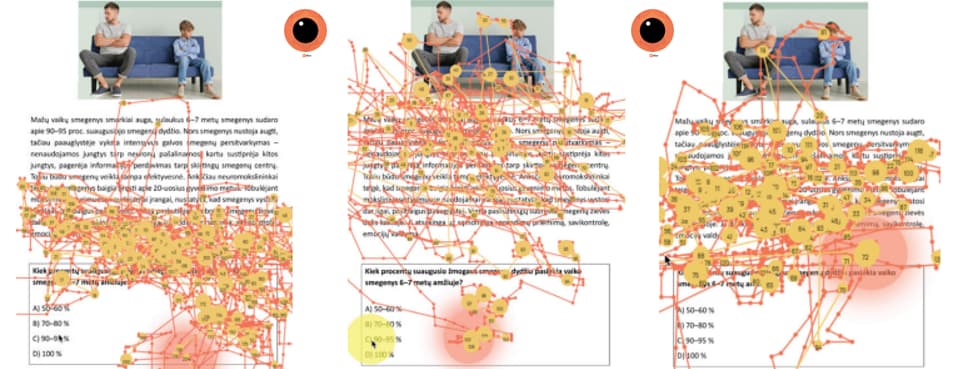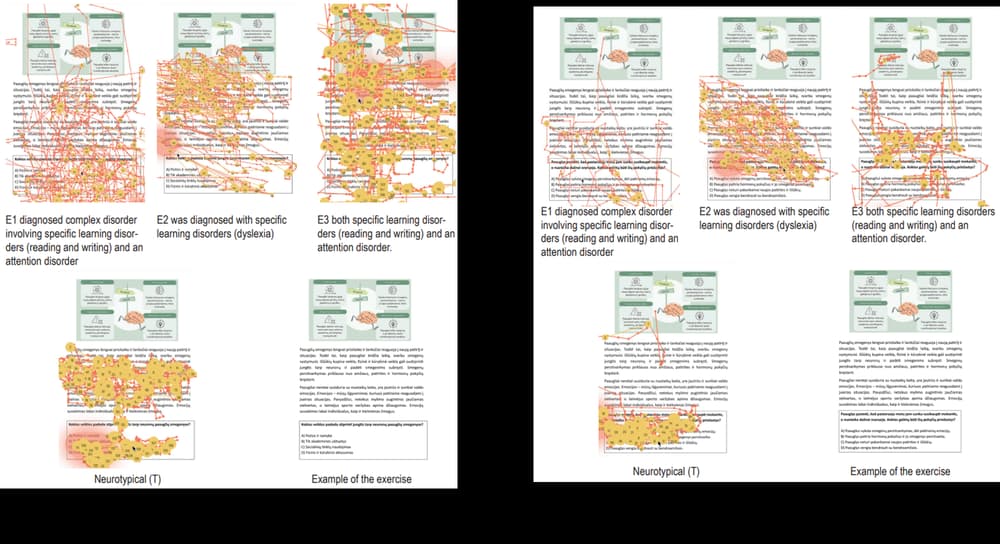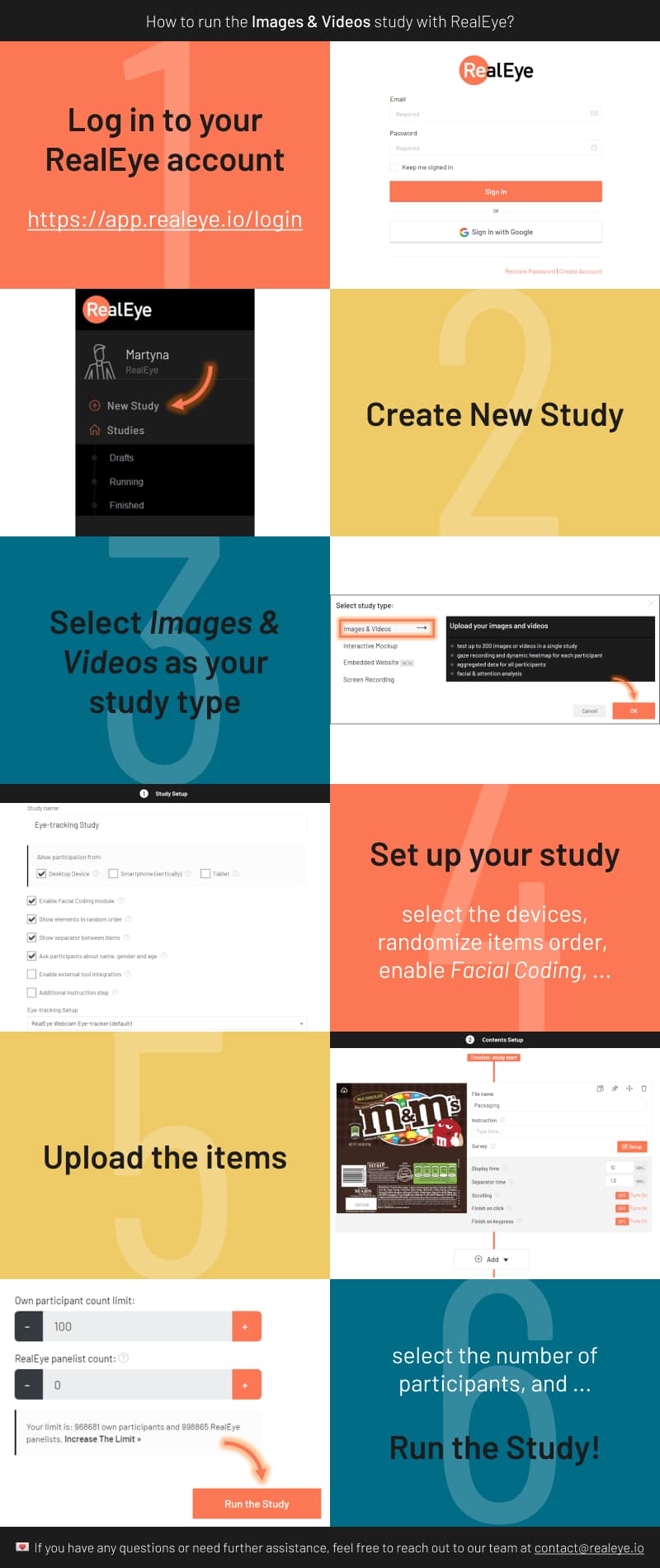

How can we make science texts more accessible to students with learning and attention disorders? A study by Aušrinė Raudoniūtė (2025) explored just that - using RealEye’s webcam-based eye-tracking technology to better understand how different types of instructional design affect reading for students with dyslexia and ADHD.
The goal of this study was simple but powerful: to see how students with learning and attention challenges read science texts, and how things like highlighted keywords, infographics, or decorative images (called “seductive details”) impact their focus and understanding.
The research focused on students aged 11–14, a crucial age for learning how to process more complex information. Using RealEye, the team aimed to observe their eye movements and understand what kind of text layout supports or distracts these students.
In a quiet classroom, students sat individually in front of laptops. They read science texts modified in four ways:
Each reading was followed by a question to test understanding. RealEye recorded their gaze patterns using the built-in webcam - tracking fixation points, scanpaths, and regressions (when a student rereads a section).
The study looked closely at four students:
Here’s what RealEye helped uncover:

This case study shows how eye-tracking with RealEye can be used to build more inclusive learning materials. If you're designing science content for students with dyslexia or ADHD, consider these takeaways:
✅ Use highlighted text to guide attention
❌ Avoid irrelevant decorative images that may distract
📉 Keep layouts clean and simple to reduce cognitive load
RealEye gave the researchers a clear, real-time view into how students actually read - and struggle - with science texts. It’s a powerful reminder that small design choices can make a big difference.

Follow the steps below to start your own experiment with RealEye:

Ready to set up your own study? Visit RealEye Support page to learn more and keep us posted on your results! 🚀